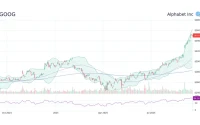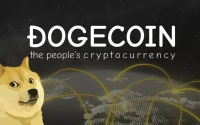The Great Restaurant Reset: Why Fast-Food Failures Are a Signal, Not a Collapse
We’re standing on the precipice of something truly profound, aren't we? When you look at headlines screaming about bankruptcies and closures, like the recent Chapter 11 filing by M&M Custard LLC, a major franchisee of Freddy’s Frozen Custard & Steakburgers, it’s easy to feel a chill. Thirty-two locations, a staggering $27.7 million in liabilities against a mere $5.2 million in assets—it sounds like a domino effect, a grim forecast for an entire industry. But what if I told you these weren’t just isolated failures, but rather crucial data points, flashing signals in a complex system, telling us that a massive, necessary reset is underway? This isn't just about one company's balance sheet; it's a reflection of a deeper, more exciting economic evolution, a call for radical innovation that could fundamentally reshape how we eat, work, and thrive.
When I first saw the details of M&M Custard’s filing, I honestly just sat back in my chair, speechless, not because of the bad news itself, but because of the sheer clarity of the pattern it revealed. We've seen a surge of fast-food and fast-casual chains struggling throughout 2025, from Dairy Queen shuttering dozens of spots to Rita's Italian Ice closing its doors. The traditional narrative blames "economic difficulty for lower- and middle-income consumers." And sure, McDonald’s CEO Chris Kempczinski isn't wrong when he talks about a "bifurcated consumer base," with lower-income traffic plummeting. Chipotle's Scott Boatwright observes a "broad-based pullback." Hooters CEO Neil Kiefer calls it "a tough time for just about everybody." They're seeing the symptoms, but are we truly grasping the underlying shift? This isn’t just a tough patch; it’s a foundational crack in an outdated model, an urgent invitation for us to build something better, something more resilient and equitable.
What we’re witnessing is the slow, inevitable erosion of a particular kind of economic equilibrium, one where convenience and low cost often came at the expense of true value, sustainability, and sometimes, even dignity for workers and consumers alike. The old model, like a perfectly optimized, but ultimately brittle, piece of software, is encountering new environmental variables—student loan repayments kicking back in, real wage growth stagnating, a pervasive feeling of economic uncertainty—and it’s crashing. This isn't just a downturn; it's a recalibration. We’re seeing the invisible hand of the market, or perhaps the collective wisdom of millions of consumers, saying, "We demand more." More transparency, more local integration, more genuine connection, and frankly, more bang for our increasingly precious buck.
The Signal in the Noise: Reimagining Our Culinary Future
Think about it: M&M Custard, with its franchise rights spanning six states, is facing a challenge that’s bigger than just their operational efficiency. It's about the very nature of their offering in a world that's rapidly changing its priorities. The specific locations slated for closure—from Carbondale, Illinois, to Jackson, Tennessee—aren't just dots on a map; they represent communities where the economic calculus has shifted. What truly excites me, what keeps me up at night sketching out new possibilities, is not the closures themselves, but what these empty spaces and changing consumer habits could become. This isn’t a collapse; it's a clearing of the field, a necessary pruning, much like how a forest fire, devastating in the short term, eventually clears the way for new, more diverse growth.
This is where our collective ingenuity truly shines. Instead of simply mourning the loss of a fast-food staple, we should be asking: What kind of food systems should replace them? How can technology empower local producers, reduce waste, and deliver nutritious, affordable meals without relying on the precarious franchise model that just cracked for M&M Custard? Can we imagine a future where AI-powered logistics optimize local food distribution, where vertical farms supply hyper-fresh ingredients, and where restaurants are community hubs rather than just transactional points? We have the tools, the data, and certainly the human need. The question isn't if innovation will happen, but how quickly we can embrace it and steer it towards a truly human-centric outcome. This economic pressure, while painful for those directly affected, is an incredible catalyst for transformation, pushing us to innovate not just for profit, but for resilience.
The Dawn of a More Resilient Palate
This isn't about celebrating failures; it's about understanding them as vital feedback loops. When companies like M&M Custard, despite being part of a larger, seemingly stable brand like Freddy's, buckle under the weight of liabilities and shifting consumer patterns, it’s a loud, clear message. It tells us that the old ways of doing business, especially in the high-volume, low-margin world of quick-service dining, are unsustainable without a deeper connection to evolving human needs. The sale of Freddy's parent company to a new private equity firm, Rhône, in September, just before this bankruptcy, hints at a broader recognition that even established players are looking for new strategies. This isn't just a tough market; it's a dynamic one, demanding adaptability. We're not just consumers; we're co-creators of the future, and our choices, even our choice to frequent a local farmers' market over a drive-thru, are powerful votes for what comes next.










